Hospital spinal units provide acute and ongoing care interventions for patients with spinal injuries. The spinal condition is normally classified into one of two categories; traumatic which is an injury to the spinal cord as a result of a traumatic event like a car accident or fall, or non-traumatic where the spine is affected by a degenerative disease, infection or tumour.
The spinal cord travels the full length of the spine and carries messages between the brain and different areas of the body. Nerve endings communicate with areas of the body at different levels along the length of the spine, therefore the higher the damage to the spinal cord, the more areas of the body that will be affected. The severity of the injury depends on the extent to which the spinal cord is damaged, whether it is complete (total damage) or incomplete (partial damage).
Spinal injury units tend to deal with a higher proportion of incomplete injuries on average, statistically around 67%.
Jump straight to…
Chair Selection for Spinal Surgery Recovery
Intensive Rehabilitation
A patient admitted into a spinal injuries unit will usually undergo intensive rehabilitation on arrival or post-surgery, to regain as much function as possible depending on how severe the injury is. As the patient is guided through their rehabilitation programme, 24-hour postural management will be a key focus at this stage.
The physios and OTs working with the patient to regain their function will be part of a multidisciplinary (MDT) team including nurses, consultant, radiologists, working in an integrated way around the patient.
The different aspects of a patient’s health that need to be managed at this stage may include:
- Managing respiratory health
- Preventing muscle contractures
- Preventing infections
- Maintaining skin integrity
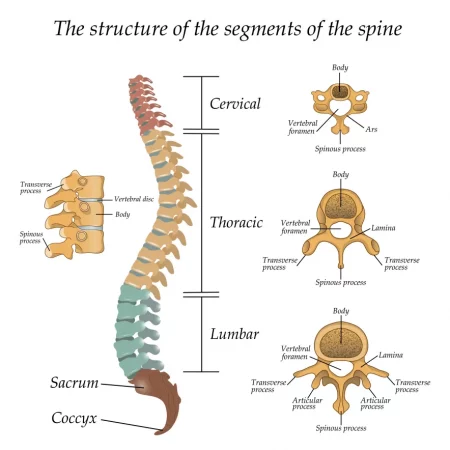
Patient seating at this stage will need to be broad and versatile enough to take all these different aspects of a patient’s condition into account.
Using care chairs with a high degree of postural support can provide the round-the-clock postural support the patient needs.
Lento Care Chair
The Lento Care Chair has a high number of postural features built into the chair whilst providing excellent pressure relief and infection control qualities.
- Managing respiratory health
Depending on the level of injury sustained, the patient may need assistance coughing or swallowing. The independent back angle and tilt-in-space function can assist with opening up the chest cavity and improving respiratory function.
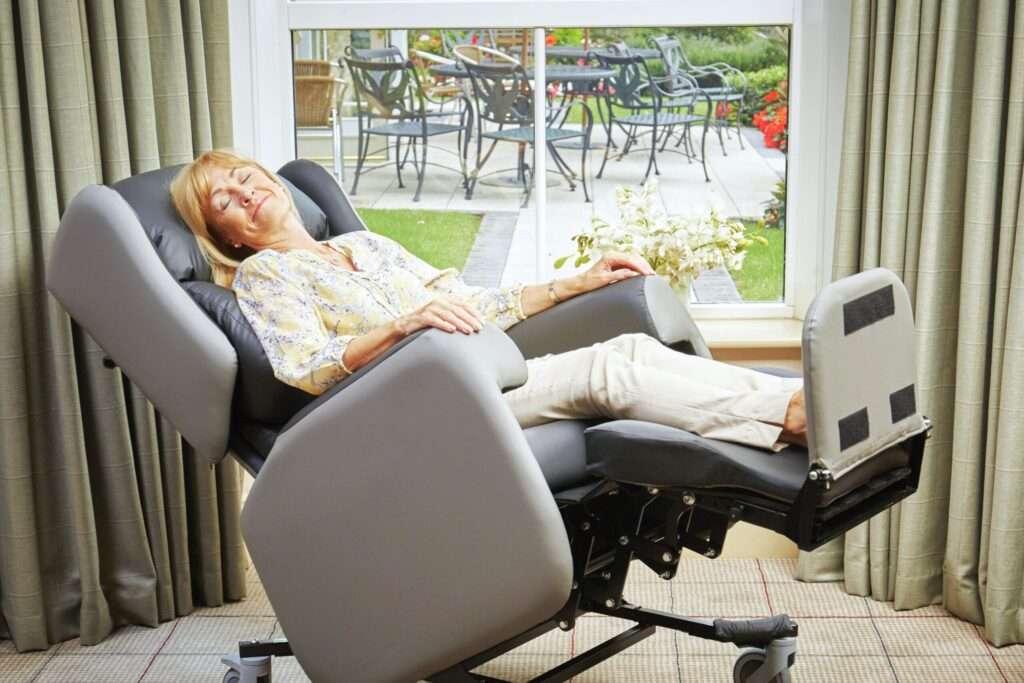
Lento Care chair
- Preventing muscle contractures. Inactivity or prolonged bedrest following a spinal injury can lead to muscles tightening and contracting, which the physio team will be working hard to prevent. The leg rest and backrest angle can both be adjusted to accommodate any hip or knee contractures while the patient’s muscle function is restored.
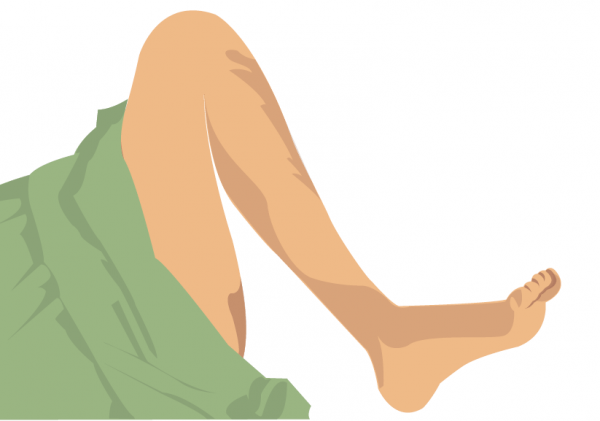
This illustration shows how someone’s leg can be positioned if they have a severe knee contracture
- Preventing infections. Infection prevention is key in the initial stages of recovery when the body’s natural immunity is at its lowest. Infection control runs through every aspect of the Lento Care Chair’s design, with antibacterial wipe-down fabric, removeable seat base and magnetic cushions that allow the chair to be deep-cleaned between patients.
- Maintaining skin integrity. Prolonged bedrest can contribute to pressure injuries if not managed properly, particularly if the patient has contractures due to loss of feeling in the limbs. Contractures can lead to severe discomfort and pressure injuries if not managed effectively with seating. The Lento Care chair caters for high-risk patients with gel pressure relief available, and extra padded supports available to adjust posture.
Preventing any of these issues from developing further is critical in the recovery phase, otherwise they can lead to secondary complications. This is where the right seating plays an integral role in the patient’s recovery and care plan in spinal injury units.
For the MDT teams working in and around the patient on a daily basis, seating will need to be intuitive and user-friendly so postural benefits are not compromised by incorrect use.
Lento Mobile
The Lento Mobile is a hybrid chair, combining the postural benefits of the Lento Care chair with more porter-friendly features such as an angle-adjustable push handle and braked castors, which allow it to be moved easily around the ward. This can be really helpful for physios and the nursing team when moving the patient to different locations to undergo physiotherapy.
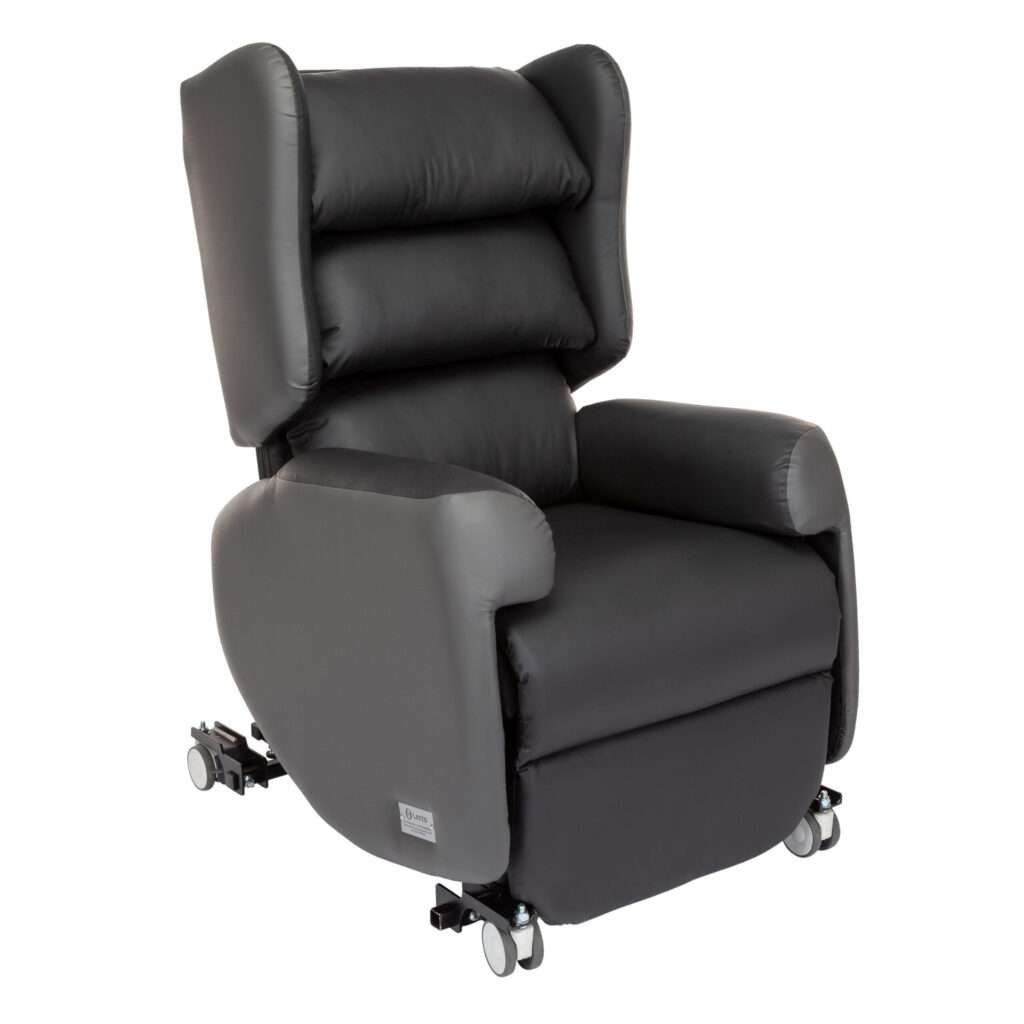
Lento Mobile riser recliner
Chair Comparisons
The Lento Care chair is designed for higher-need patients that have a higher loss of function, and may need hoisting or longer-term postural management.
The Lento Mobile is compatible with standaids and hoists, but would be more suited to incomplete spinal injures, where the patient has partial or temporary loss of function and is undergoing physiotherapy.
Follow-up Treatment for Discharge
After the initial phase of acute treatment, patients will need to be assessed for their ongoing needs so a suitable care plan can be put in place. Giving the patient as much independence as possible is important to help them and their families adapt to a change in circumstances caused by spinal injury.

This is where the occupational therapist plays a key role in determining the patient’s priorities once they are discharged from hospital. Some may want to pursue more active roles such as sports, which their choice of seating will reflect. Active user wheelchairs are an excellent choice for users who have lower limb paralysis but want to carry on participating in sports and outdoor activities.
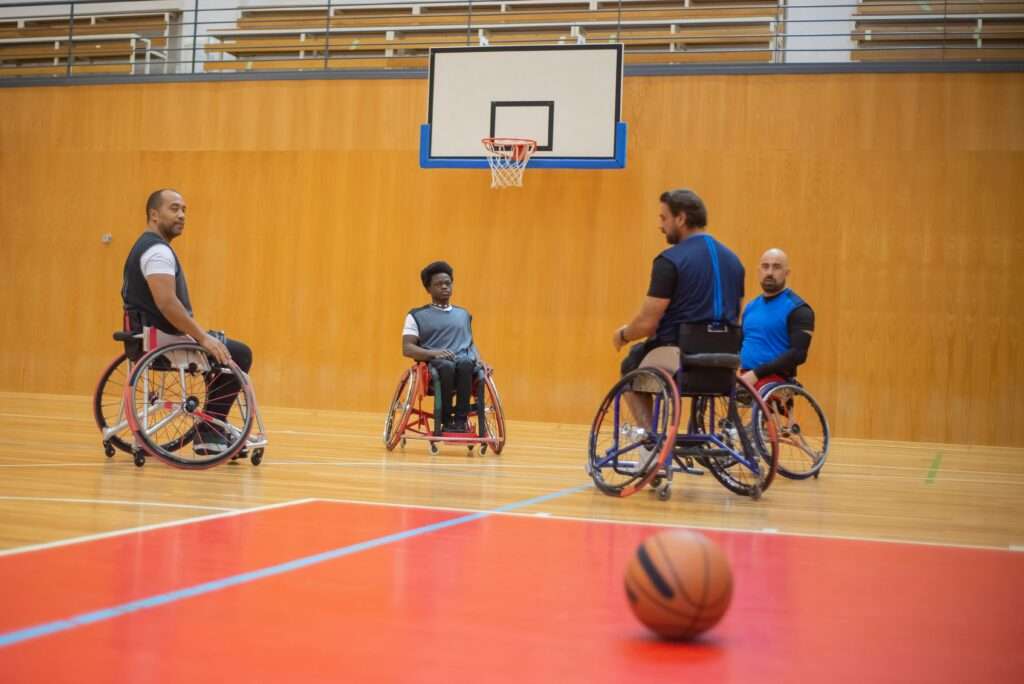
For patients who are paraplegic (paralysed from legs down) or quadriplegic (all four limbs paralysed), manual wheelchairs like the Rea Azalea or Permobil powerchairs have greater levels of adaptation and postural control features for more specialisation.
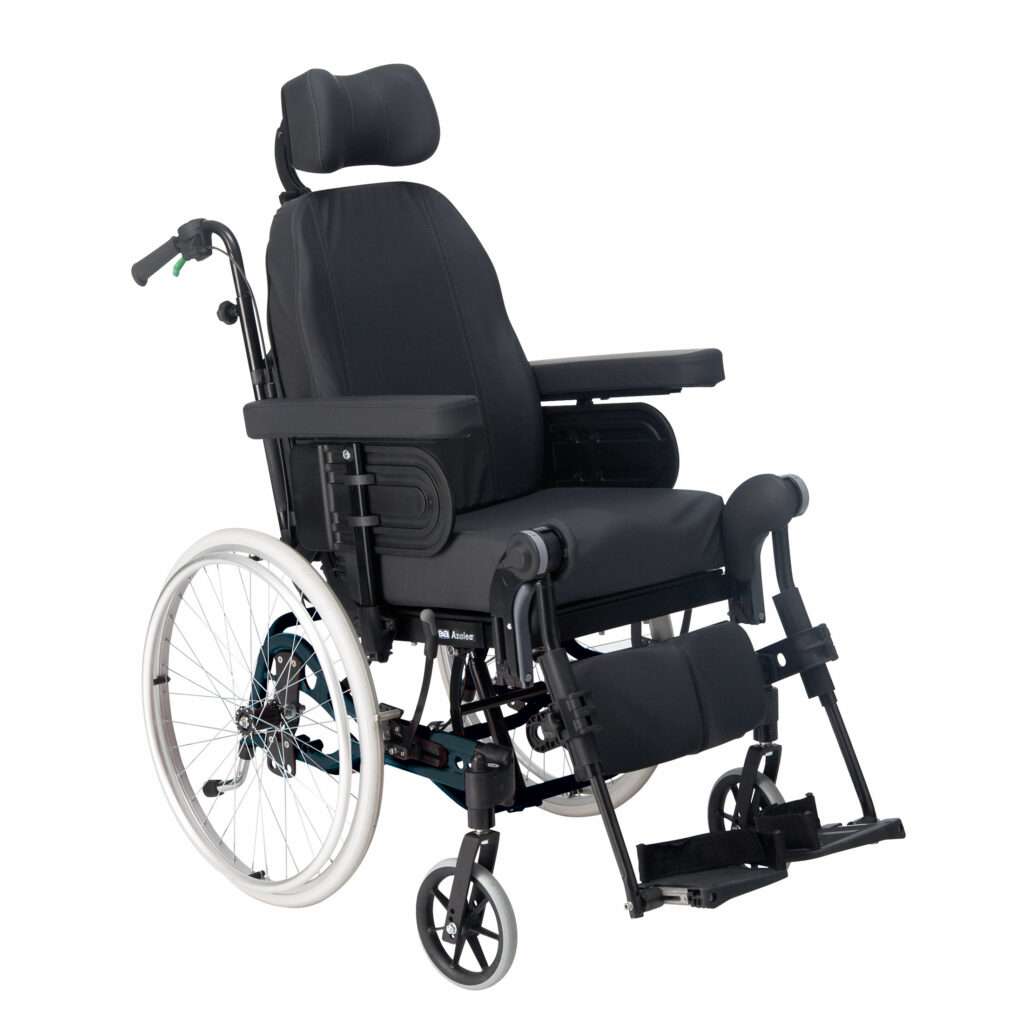
Rea Azalea wheelchair
As the Physical Therapy & Medical Journal so aptly describes it, “a seating and mobility assessment is better thought of as a jigsaw puzzle than as a cookbook. There is no one recipe that ensures success, rather the examination is a process of collecting interlocking pieces of information, recognizing when there are holes, and being creative in finding ways to fill the holes to facilitate the completion of the puzzle, a puzzle that is constantly shifting.”
This is stock-in-trade for occupational therapists and case managers, who have the skills and resources at their fingertips to bring this picture together for the spinal injury patient.
Equipment Trials and Demonstrations
If you are considering new seating for your spinal injury unit, our acute seating team can carry out on-site demos and equipment trials for your team. Get in touch with us using the contact form below and we will be straight in touch!
Speak to our team today














